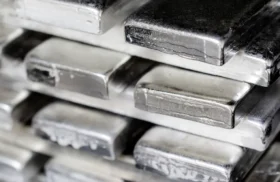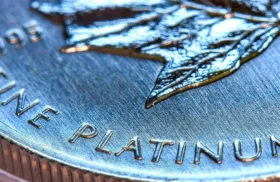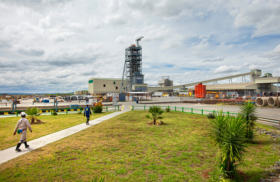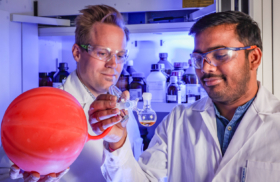Platinum

June 30, 2025
Platinum Surges 50% to Decade High as Supply Constraints and Chinese Demand Drive Market Recovery
Platinum prices have climbed from below $900 per ounce in early April 2025 to nearly $1,400 per ounce by late June, marking a 50% increase and reaching the highest levels in almost a decade. The rally has lifted platinum mining stocks dramatically, with Impala Platinum gaining 75% year-to-date, Northam Platinum advancing 88%, and Sibanye-Stillwater jumping...
READ MORE
June 10, 2025
Current platinum price trends
Platinum prices in recent months have been volatile, driven by a combination of industrial demand, global macroeconomic conditions, and market sentiment. Prices are currently hovering around $1,210 per ounce, rebounding from May lows caused by US dollar appreciation and weak demand from the automaker segment. One of the leading drivers of current prices is the...
READ MORE
June 4, 2025
Valterra Platinum Lists on London Stock Exchange Following Anglo American Demerger
BY Lars Jensen
Valterra Platinum, formerly Anglo American Platinum, commenced trading on the London Stock Exchange on June 2, 2025, marking the completion of its demerger from global mining company Anglo American. This move is a key component of Anglo American’s broader strategy to restructure its portfolio and concentrate on core assets, following the rejection of a $50...
READ MORE
May 28, 2025
Valterra Platinum Makes Market Debut After Anglo American Spin-Off
BY John Davis
Valterra Platinum, formerly Anglo American Platinum, began trading as an independent company on the Johannesburg Stock Exchange on Wednesday, finalizing its separation from parent Anglo American. The debut marks the completion of a major restructuring move by Anglo, which is shifting its focus to copper and iron ore after fending off a $49 billion takeover...
READ MORE
May 28, 2025
Platinum Prices Surge to Two-Year High as Supply Deficit Deepens and Chinese Demand Soars
BY Lars Jensen
Platinum prices surged last week to their highest levels in two years, posting the strongest five-day gain in over a year as investors responded to new research forecasting a deeper-than-expected global supply deficit. The World Platinum Investment Council (WPIC) now projects that platinum supply in 2025 will fall to a five-year low of just 7...
READ MORE
May 23, 2025
Johnson Matthey: Palladium Market to Reach Balance in 2025, Platinum Deficit to Persist
BY Lars Jensen
Johnson Matthey analysts expect the palladium market to move into balance in 2025, following more than a decade of deficits from 2012 to 2024. This shift is driven by a 6% drop in palladium demand, mainly due to reduced production of gasoline vehicles and weaker investment interest. The outlook for platinum group metals (PGMs)—platinum, palladium,...
READ MORE
May 20, 2025
Platinum price forecast 2025: trends, projections, and market analysis
BY John Davis
Current Platinum Price Trends As of Q2 2025, platinum prices are showing modest recovery from their 2023 lows. The metal is currently trading around $950–$1,000 per ounce, up from sub-$900 levels seen during the economic slowdown of 2023. Key drivers of recent price behavior include: Despite historically being more expensive than gold, platinum price is...
READ MORE
May 18, 2025
Top platinum mining companies to watch in 2025
BY Lara Browne
Global platinum production overview Platinum is a vital precious metal with applications in automotive catalysts, industrial processes, and jewelry. In recent years, its role in green hydrogen technologies and fuel cells has expanded its strategic value. Global platinum production reached approximately 236 metric tons in 2024, with South Africa accounting for over 70% of the...
READ MORE
May 14, 2025
Researchers Develop Bifunctional Copper Catalyst Enabling Low-Pressure Hydrogenation of Inert Molecules
BY Lars Jensen
A team of chemists from Chemnitz University of Technology and the University of Innsbruck has developed a new copper-based catalyst capable of activating and transferring molecular hydrogen at low pressure, enabling reactions previously considered impractical under mild conditions. Led by Professor Johannes Teichert (Chemnitz) in collaboration with Professor Fabian Dillmann’s group (Innsbruck), the researchers reported...
READ MORE
May 2, 2025
Implats Reports Decreased Production in Q3 FY2025 Amid Operational Challenges
BY Lara Browne
Implats has reported a 6% decrease in 6E Group production for the quarter ended 31 March 2025, with output totaling 780,000 ounces, compared to 827,000 ounces during the same period last year. The decline was largely driven by operational challenges, including the impact of required maintenance at South African smelters and constrained mining fleet availability...
READ MORE